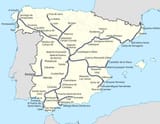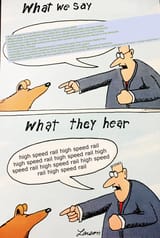>>2054495
Japan is probably the worst example, because most lines there are operated either profitable or as part of a profitable business (like say with additional income from station shops owned by the train company).
In the EU to subsidize train *operation* there has to be a public tendering for subsidized service. Most long-distance lines and especially HSR are operated as commercial service, ie as a profitable train service (and recently other operators started competing for them which is also retarded but a whole different story).
However the trick is that the cost of infrastructure is counted separately.
It works like this
>government builds rail line
>either charges operators for running trains on them
>or tenders out subsidized service
So the question is: does any particular line get enough traffic to make the *infrastructure* economically viable, ie pay for maintenance and construction cost?
In France the higher used lines are profitable in both operation and infrastructure costs while the lesser used lines like the LGV Nord and LGV Mediterranee likely lose money on the infrastructure.
However you can argue that a certain deficit is fine so long as you get enough other benefits out of it.
Spain otoh is a grotesque example. All HSR lines except Madrid-Barcelona, Madrid-Seville and Madrid-Valencia are massively underused to the point that the government has to tender out subsidized HSR service to get more than a few trains a day running.
The Spanish HS Infrastructure operator has a debt of almost 20 billion euros (and counting because it has a yearly deficit of 100 million), and that doesn't include direct investment from the government and from the EU in HSR construction. Spain has also invested around 24 billion euros only from 2022 to 2026.
tl;dr train lines often have some deficit in operation only (as normal lines have often been built 100+ years ago), but Spanish HSR deficit is in a league of its own







